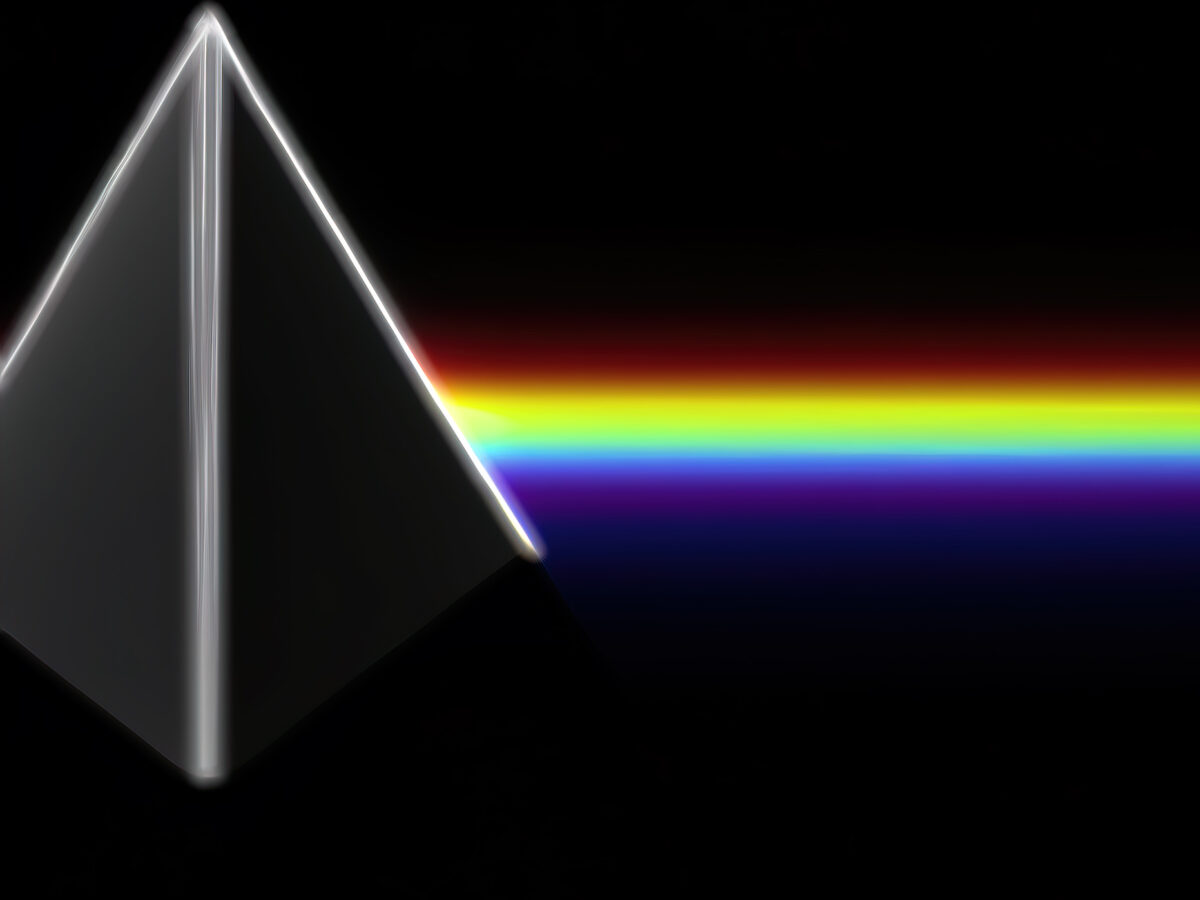The Dark Side of the Moon” is the eighth studio album by the English rock band Pink Floyd, released in 1973. The album is one of the best-selling and most critically acclaimed albums in the history of music, and it has been inducted into the Grammy Hall of Fame.
The album features a mix of rock, blues, and experimental music, and it explores themes of insanity, greed, and the human experience. The songs on the album are united by a common concept and are intended to be listened to as a whole, rather than as individual tracks.
One of the most notable features of “The Dark Side of the Moon” is its use of sound effects and spoken word samples, which are used to create a sense of atmosphere and to link the songs together. The album also features elaborate sound design and production techniques, including the use of synthesizers, tape loops, and multi-layered vocals.
The album’s artwork, which features a prism refracting light into a rainbow, is iconic and has become one of the most recognizable album covers in music history.
One of the standout tracks on the album is “Money,” which features a distinctive funk-influenced groove and a memorable guitar riff. The song, which was written by Roger Waters, is a commentary on the corrupting influence of money and features some of the album’s most memorable lyrics, including the famous line “Money, it’s a hit.”
Another standout track is “Time,” which features a prominent clock ticking sound effect and explores the passage of time and the fleeting nature of life. The song features a memorable saxophone solo and some of the album’s most poignant lyrics, including the lines “Ticking away the moments that make up a dull day / You fritter and waste the hours in an offhand way.”
Here is a review and track-by-track analysis of “The Dark Side of the Moon”:
- “Speak to Me” – This instrumental track features the sound of a heartbeat and a variety of sound effects, including the sound of footsteps and breathing, which set the stage for the album’s themes of insanity and the human experience.
- “Breathe (In the Air)” – This song, which features vocals by lead singer David Gilmour, explores the theme of the preciousness of life and the importance of living in the moment. The song’s catchy guitar riff and Gilmour’s emotive vocals make it a standout track on the album.
- “On the Run” – This instrumental track features a driving beat and a variety of sound effects, including the sound of airplanes and alarm clocks, which create a sense of tension and unease.
- “Time” – This song, which features vocals by Gilmour and bassist Roger Waters, explores the theme of the fleeting nature of time and the inevitability of death. The song’s memorable guitar riff and Waters’ powerful vocals make it a fan favorite.
- “The Great Gig in the Sky” – This song, which features vocals by Clare Torry, is a showcase for Torry’s powerful and emotive vocals. The song’s lyrics, which are based on the theme of death, are sparse and are intended to provide a backdrop for Torry’s vocals.
- “Money” – This song, which features vocals by Waters and Gilmour, is a commentary on greed and the corrupting influence of money. The song’s memorable saxophone solo and catchy guitar riff make it one of the most popular tracks on the album.
- “Us and Them” – This song, which features vocals by Gilmour and Waters, explores the theme of the divisions between people and the ways in which these divisions can lead to conflict. The song’s memorable saxophone and flute melodies and Gilmour’s emotive vocals make it a standout track on the album.
- “Any Colour You Like” – This instrumental track features a dreamy, atmospheric sound and is intended to provide a break between the album’s heavier, more complex tracks.
- “Brain Damage” – This song, which features vocals by Gilmour, is a commentary on the destructive power of insanity and the ways in which it can destroy relationships and lives. The song’s memorable guitar riff and Gilmour’s emotive vocals make it a fan favorite.
- “Eclipse” – This song brings together many of the themes and ideas explored throughout the album and serves as a powerful tribute to the power of music and the unity of all things.
Here are a few interesting facts and anecdotes about “The Dark Side of the Moon”:
- The album’s iconic cover art, which features a prism refracting a beam of light, was designed by Storm Thorgerson and Hipgnosis.
- “The Dark Side of the Moon” was recorded at Abbey Road Studios in London and was produced by the band and engineer Alan Parsons. The album features some of the most innovative production techniques of the time, including the use of sound effects and spoken word samples.
- The album’s title was inspired by a quote from composer and scientist Dr. Clare Torry, who said that “there is no dark side of the moon, as a matter of fact, it’s all dark.”
- The album’s opening track, “Speak to Me,” features the sound of a human heartbeat, which was recorded by placing a microphone inside a stethoscope.
- “The Dark Side of the Moon” was originally intended to be a concept album about madness and insanity, with each song representing a different aspect of the theme. However, the concept evolved during the writing and recording process, and the final album ended up exploring a wider range of themes.
- The album has sold more than 50 million copies worldwide and has been widely regarded as one of the greatest albums of all time. It has been included on numerous “best albums” lists and has been inducted into the Grammy Hall of Fame.
“The Dark Side of the Moon” has had a significant influence on the music industry and on popular culture. The album has been widely regarded as one of the greatest albums of all time and has been included on numerous “best albums” lists.
Musically, the album has been praised for its innovative production techniques, complex arrangements, and the use of sound effects and spoken word samples. It has influenced a wide range of artists, including Radiohead, Muse, and Trent Reznor of Nine Inch Nails.
The album has also had a cultural impact, with its iconic cover art and memorable lyrics becoming a part of popular consciousness. The album’s title and themes of insanity and conflict have also been widely referenced in popular culture.
All images and all text in this blog were created by artificial intelligences

